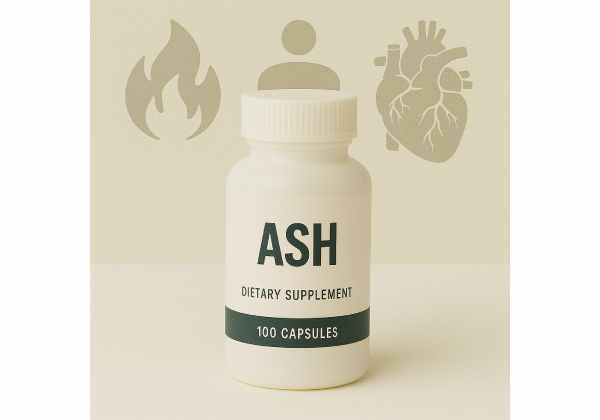Artichoke Extract Supplement: Proven Benefits, Dosage Instructions, and Safety
Artichoke extract, derived from the leaves of the Cynara scolymus plant, has emerged as a versatile supplement for digestive wellness, liver support, and cholesterol balance. Prized in traditional Mediterranean medicine and now validated by modern science, artichoke extract is rich in antioxidants and bioactive compounds like cynarin and chlorogenic acid. Today, it’s widely used for promoting healthy bile flow,...
Artichoke Leaf Extract: Effective Dosage, Benefits, and Safety Explained
Artichoke leaf extract has become a leading natural remedy for supporting liver health, cholesterol balance, and digestive wellness. Extracted from the leaves of the Cynara scolymus plant, this supplement is prized for its unique combination of antioxidants, especially cynarin and chlorogenic acid. Used for centuries in traditional Mediterranean medicine and now supported by modern science, artichoke leaf extract can...
Arum: Health Benefits, Traditional Uses, Dosage, and Safety Guidelines
Arum, a genus of perennial plants known for their unique arrow-shaped leaves and medicinal history, has garnered attention in the world of herbal supplements. Traditionally found across Europe, North Africa, and parts of Asia, species like Arum maculatum (commonly called wild arum or lords-and-ladies) have been used for respiratory, digestive, and skin complaints. Today, modern extracts of arum are...
Asafoetida for Gut Health: Top Benefits, Proper Dosage, and Safety Precautions
Asafoetida, often called the “devil’s dung” for its pungent aroma, is a unique resinous spice and traditional supplement with deep roots in Ayurvedic, Persian, and Middle Eastern wellness. Sourced from the roots of Ferula species, asafoetida is renowned for its digestive, antispasmodic, and antimicrobial properties. Beyond culinary use as a flavoring, it has attracted scientific interest for supporting gut...
Asarabacca: Herbal Benefits, Traditional Uses, Dosage, and Side Effects Uncovered
Asarabacca, a lesser-known medicinal herb, has intrigued herbalists and wellness seekers for centuries. Celebrated for its aromatic properties and unique bioactive compounds, asarabacca is often explored for potential uses in respiratory health, traditional cleansing rituals, and as a botanical aid in various remedies. While its pungent scent and historical roots in European herbal medicine add to its allure, asarabacca...
Asarum Supplement: Complete Guide to Benefits, Safe Uses, and Cautions
Asarum, often called wild ginger, is a unique herb long valued in both Eastern and Western herbal traditions for its aromatic roots and distinct medicinal properties. Used for centuries as a natural remedy for colds, congestion, and digestive discomfort, asarum’s warming qualities and rich history set it apart from many modern supplements. Today, interest in asarum continues thanks to...
Ascophyllum Nodosum Kelp: Full Supplement Benefits, Safe Dosage, and Side Effects
Ascophyllum nodosum, also known as Norwegian kelp or rockweed, is a brown seaweed native to the North Atlantic coasts. Renowned for its dense nutritional profile and unique bioactive compounds, Ascophyllum nodosum is gaining traction as a natural supplement for both humans and pets. With benefits ranging from thyroid and metabolic support to antioxidant, anti-inflammatory, and prebiotic effects, this marine...
Ascorbate: Best Forms, Health Advantages, Dosage, and Potential Risks
Ascorbate, best known as the active form of vitamin C, is an essential nutrient that plays a pivotal role in human health and wellness. Valued for its antioxidant power, immune-boosting potential, and contributions to collagen formation, ascorbate is found naturally in many fruits and vegetables—and is also widely available in supplement form. Whether you’re looking to support your immune...
Ascorbic Acid (Vitamin C): Best Uses, Dosage, Side Effects, and More
Ascorbic acid, widely known as vitamin C, is an essential nutrient celebrated for its robust antioxidant properties, immune support, and vital role in maintaining healthy skin, blood vessels, and connective tissue. Naturally present in fruits and vegetables and commonly used in dietary supplements, ascorbic acid is fundamental for overall health and wellness. Whether you’re looking to strengthen your immune...
Ascorbigen (Cruciferous Extract): Wellness Benefits, Dosage, and Risks
Ascorbigen is a unique, naturally occurring compound formed when vitamin C (ascorbic acid) interacts with glucobrassicin—a phytochemical found abundantly in cruciferous vegetables like broccoli, cabbage, and Brussels sprouts. Unlike standard vitamin C supplements, ascorbigen is gaining attention for its potential to deliver antioxidant, anti-inflammatory, and possible anti-cancer effects in a gentle, food-based form. With growing interest in plant-derived health...
Ascorbyl Glucoside Supplement: Skin Brightening, Antioxidant Benefits, Dosage, and Risks
Ascorbyl glucoside is a next-generation vitamin C derivative that has gained widespread recognition for its stability, gentle nature, and exceptional efficacy—especially in skin care and wellness products. This compound combines ascorbic acid (vitamin C) with glucose, creating a water-soluble, highly stable molecule that offers prolonged antioxidant activity and a range of potential health and cosmetic benefits. Whether you’re looking...
Ascorbyl Palmitate (Fat-Soluble Vitamin C): Advantages, Dosage, and Potential Risks
Ascorbyl palmitate is a unique, fat-soluble form of vitamin C that is widely used in dietary supplements, skin care, and the food industry. Unlike standard ascorbic acid, ascorbyl palmitate is both oil- and water-dispersible, allowing it to penetrate cell membranes and deliver powerful antioxidant protection where it’s needed most. This versatile compound supports skin health, enhances immune function, and...
Ascorbyl Stearate: How It Supports Food Freshness, Skin Health, and Wellness
Ascorbyl stearate is a unique fat-soluble derivative of vitamin C, valued for its dual role as both a dietary antioxidant and a versatile additive in food, supplements, and skincare. By combining ascorbic acid (vitamin C) with stearic acid (a natural fatty acid), this compound offers enhanced stability and better absorption into fatty tissues. Its antioxidant properties help support skin...
Ash Supplement: Natural Benefits, Uses, Dosage, and Safety Information
Ash, particularly ash tree extract and plant ash, has a long-standing tradition in herbal medicine and natural health. From ancient healing rituals to modern wellness supplements, “ash” describes both the botanical extracts of the Fraxinus genus (ash tree) and, in some contexts, the mineral-rich residue from burning plant material. Both types have attracted interest for their potential anti-inflammatory, remineralizing,...
Ashitaba Supplement: Complete Review of Health Benefits, Uses, and Dosage
Ashitaba, known as “tomorrow’s leaf,” is a unique green superfood gaining recognition for its impressive array of health benefits. Used for centuries in Japan, this plant is prized for its naturally occurring chalcones—powerful antioxidant compounds—along with an abundance of vitamins, minerals, and fiber. Many seek Ashitaba to support immune health, aid digestion, balance metabolism, and promote healthy aging. From...
Ashoka: Women’s Health Benefits, Menstrual Support, Dosage, and Side Effects
Ashoka, revered in Ayurveda for centuries, is a unique herbal remedy drawn from the bark of the Saraca asoca tree. Traditionally recognized as a potent women’s wellness tonic, Ashoka supports menstrual comfort, hormonal balance, and reproductive health. Its benefits extend beyond gynecological uses, offering anti-inflammatory, antioxidant, and mood-supportive effects. Increasingly, Ashoka is being incorporated into holistic wellness routines, thanks...
Ashwagandha Extract Benefits: Mental Health, Stress Support, Dosage, and Risks
Ashwagandha extract, derived from the roots of Withania somnifera, has become a cornerstone of modern natural health for its wide range of proven benefits. Celebrated as a powerful adaptogen in Ayurvedic tradition, Ashwagandha is used to combat stress, boost energy, enhance mental clarity, and promote restful sleep. Modern science confirms its value for reducing cortisol, supporting cognitive function, and...
Asparagine: Amino Acid Benefits, Cognitive Support, Dosage, and Side Effects
Asparagine is an amino acid that plays a crucial role in human biology, health, and nutrition. Naturally present in many protein-rich foods such as asparagus (from which it gets its name), legumes, and dairy, asparagine is vital for energy production, nervous system support, and the synthesis of proteins and neurotransmitters. While the body can produce asparagine on its own,...
Asparagus Extract: Kidney Health, Detox Benefits, Dosage, and Side Effects
Asparagus extract, derived from the nutrient-rich vegetable Asparagus officinalis, is gaining attention in the world of natural health for its impressive range of benefits. Packed with antioxidants, unique phytonutrients, and natural diuretic properties, asparagus extract is prized for supporting kidney health, reducing inflammation, and promoting detoxification. It’s also used for metabolic support, cardiovascular wellness, and as a gentle aid...
Aspartame: Artificial Sweetener Benefits, Dosage, and Safety Guide
Aspartame is one of the world’s most widely used low-calorie artificial sweeteners, found in thousands of foods and beverages. It is prized for its intense sweetness—about 200 times sweeter than sugar—allowing for significant calorie reduction without sacrificing taste. Aspartame is commonly used by people seeking to manage their weight, reduce sugar intake, or control blood glucose levels. Despite its...
Aspartic Acid: Key Benefits, Athletic Uses, Dosage, and Risks
Aspartic acid is a naturally occurring amino acid with key roles in human health, athletic performance, and metabolism. Popular among athletes, bodybuilders, and those seeking cognitive or energy support, aspartic acid (often in the form of D-aspartic acid or L-aspartic acid) is involved in protein synthesis, hormone regulation, and cellular energy production. Whether consumed as a supplement or through...
Aspen Extract: Health Benefits, Proper Dosage, and Risks Explained
Aspen, derived from the bark of Populus tremuloides or related aspen tree species, is a time-honored herbal remedy with a legacy rooted in traditional wellness practices. Known for its natural salicylates, aspen has historically been valued for its pain-relieving, anti-inflammatory, and fever-reducing properties. Today, aspen extract and supplements are gaining renewed attention as a gentle alternative for managing discomforts...
Aspergillus Niger: Complete Guide to Benefits, Enzyme Uses, Dosage, and Side Effects
Aspergillus niger is a microscopic fungus best known for its crucial role in biotechnology, nutrition, and natural health. Revered for its powerful enzymatic abilities, Aspergillus niger is harnessed to produce digestive aids, boost nutrient absorption, and support healthy metabolism. Its beneficial impact spans food processing, enzyme supplementation, and even environmental applications. Many people are drawn to its natural origins...
Aspergillus oryzae Supplement: How It Works, Health Benefits, Dosage, and Safety
Aspergillus oryzae is a powerful, natural fungus with a centuries-old legacy in Asian fermentation and modern health supplements. Best known for its role in making miso, soy sauce, and sake, this unique microorganism is now widely recognized for its enzyme-rich properties that support digestion, nutrient absorption, and gut health. Aspergillus oryzae-derived supplements have gained popularity as vegan-friendly digestive aids,...
Astaxanthin Antioxidant: Health Benefits, Uses, Dosage, and Safety Tips
Astaxanthin is a naturally occurring, vibrant red antioxidant found in microalgae, seafood, and certain plant sources. Renowned for its extraordinary ability to neutralize free radicals, astaxanthin has attracted attention for its potential to support skin health, vision, athletic performance, and overall cellular protection. Its benefits extend from UV protection to heart and immune system support, making it one of...
Astragaloside IV: Complete Guide to Immune, Anti-Aging, and Cardiovascular Benefits
Astragaloside IV is a bioactive compound found in the root of Astragalus membranaceus, a revered herb in traditional Chinese medicine. Celebrated for its adaptogenic, antioxidant, and cellular longevity properties, astragaloside IV is gaining popularity as a modern supplement for immune support, cardiovascular wellness, and healthy aging. Emerging research highlights its ability to protect cells, combat oxidative stress, and enhance...
Astragalus Root Extract Benefits: Uses, Dosage, Safety, and Scientific Insights
Astragalus root extract is a cornerstone of herbal medicine, cherished for centuries across Asia for its restorative and protective qualities. Modern science now validates many traditional uses, showing that astragalus extract is rich in polysaccharides, saponins, and flavonoids—bioactive compounds that help support immune function, heart health, energy, and resilience to daily stress. With a growing reputation for anti-aging, antioxidant,...
Atalantia Supplement: Science-Backed Benefits, Dosage, and Side Effects
Atalantia is a genus of small citrus-like plants revered in traditional medicine, especially across Asia and India, for their unique phytochemical properties and wellness benefits. Increasingly featured in modern herbal supplements, Atalantia species are recognized for their potential antioxidant, antimicrobial, and anti-inflammatory effects. Used historically for digestion, immune support, and skin health, Atalantia’s phytochemical richness—particularly its essential oils, alkaloids,...
Atelocollagen: Advanced Collagen Therapy for Health and Beauty
Atelocollagen is an advanced, highly purified form of collagen derived from animal sources, renowned for its exceptional compatibility with human tissue. Its unique structure makes it less likely to cause allergic reactions and more readily absorbed, making it a favorite for both cosmetic and therapeutic applications. Used in skin rejuvenation, joint support, wound healing, and even medical scaffolds, atelocollagen...
Ateronon: Lycopene Heart Supplement Benefits, Dosage, and Side Effects
Ateronon is a unique dietary supplement renowned for its heart health and antioxidant support, primarily due to its core ingredient—Lycopene, a natural carotenoid found in tomatoes. This supplement has gained widespread attention for its potential to support cardiovascular function, lower oxidative stress, and promote overall wellness. Ateronon’s specialized formulation is designed to maximize absorption, making it a go-to choice...








































